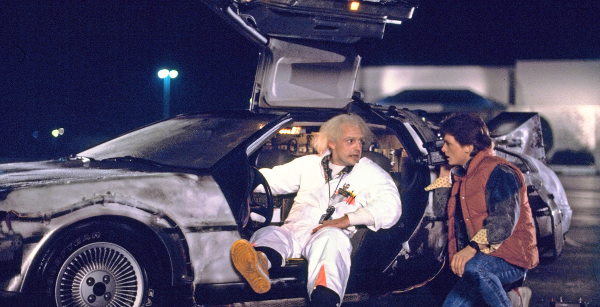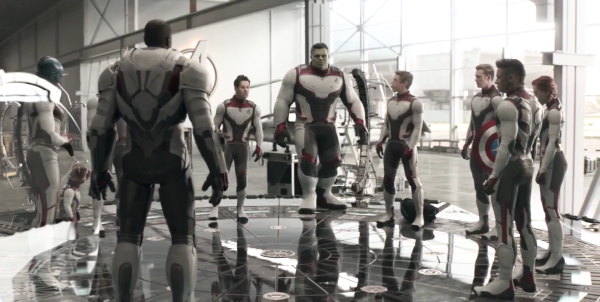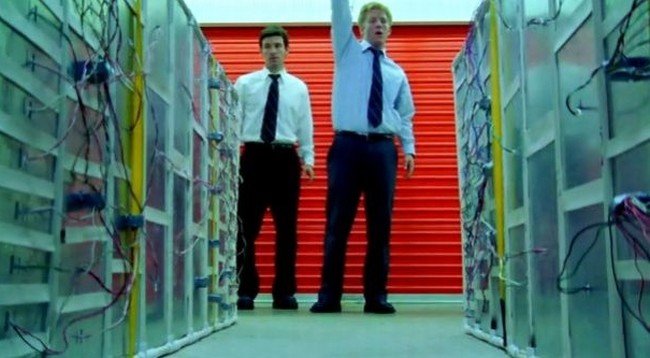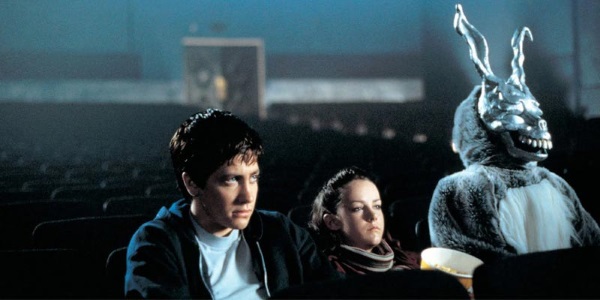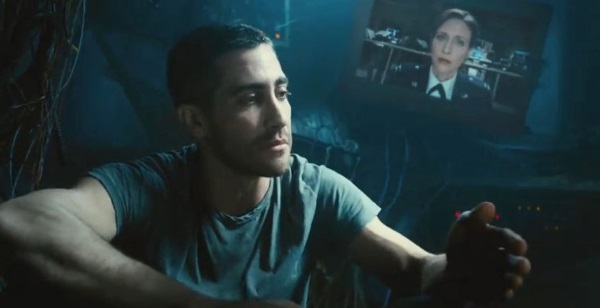What is mechanics of time-travel? Simple, it’s the in-film concept based on which the character(s) experience time-travel. Do people appear and disappear with minimal explanation, or is there an innovative device or a fantastic element powering the time-travel? In short, it is ‘how‘ the time-travel takes place. The more thought out this fictional portion is, the better you tend to remember the film. The movie gets even more interesting if the mechanics play a core role in the plot. And how do I define a time-travel movie? Well, as long as there is at least one character experiencing time non-linearly, the movie qualifies for the category. This is Barry, welcome to my site, and here are the most impressive mechanics of time-travel in movies in no particular order.
The Mechanics Score is one part of Barry’s Time Travel Review Score (BaTTR Score), and you can read all about it here – The BaTTR Score. For the complete list, do check the 50+ Best Time Travel Movies of all times.
Hollywordle – Check out my new Hollywood Wordle game!
Where To Watch?
To find where to stream any movie or series based on your country, use This Is Barry’s Where To Watch.
Oh, and if this article doesn’t answer all of your questions, drop me a comment or an FB chat message, and I’ll get you the answer. You can find other film explanations using the search option on top of the site.
Interstellar (2014)
Nolan loves non-linear storytelling. In Interstellar, we actually witness events linearly from the perspective of the protagonist. However, that’s not the case for the other characters in the movie. There are two well thought out mechanics of time-travel:
Gravity – The theory is that gravity warps time. Getting closer to a black hole (a star with gravity so strong that light cannot escape it), results in the person experiencing time much slower. When a portion of the team touches down on a planet in the close proximity of a black hole, and stay about an hour, the other team member (and Earth) experience 23 years. In short, the protagonists experience time travel to the future by 23 years in this manner inadvertently.
5-Dimensional Tesseract – The film presents outstanding visuals on how a 5-dimensional construct can be represented within 3 dimensions. Once again, gravitational forces are theorized to be able to slip back in time to affect objects from the past.
The notion of time dilation, which unexpectedly causes traveling forward in time, and the brilliant concept of the 5-D Tesseract, which allowed access to the past, makes this film’s mechanics of time-travel unforgettable.
To know everything about the film and the little plot-holes in it, do give this a read – Interstellar Movie Explained.
Back To The Future (1985)
If my calculations are correct, when this baby hits 88 miles per hour, you’re gonna see some serious sh*t. This sucker’s electrical, but I need a nuclear reaction to generate the 1.21 gigawatts of electricity I need.
Back To The Future’s mechanics of time-travel had creativity, complexity, and style. The time machine was built out of a DeLorean, which now is a symbol for time-travel. The invention that powers the time-travel is the Flux Capacitor. While it is perfectly compact to be fitted into a car, it needs 1.21 gigawatts of power to get it going. It’s a three-step process to travel through time in the three films.
- Turn on the Time Circuits and enter the date and time when you want to travel to.
- Ensure that the on-board Flux Capacitor is … fluxing.
- Floor that pedal to hit 88 miles per hour.
If the 1.21 GW of power is available (by means of stolen plutonium or a bolt of lightning), you will be on your way, leaving behind a bright trail of flames.
Back To The Future inspired many films in this space, and the DeLorean went from being a stylish car to the most desired memorabilia thanks to this film.
Avengers: Endgame (2019)
To the question “what are your favourite time-travel movies?” the answer might not include Avengers: Endgame. Fair enough, that was not the only theme of the movie, and time-travel is used to enable the Avengers to undo a terrible event. However, the thought and effort put into the mechanics of traveling through time in this film can’t be ignored. Endgame had the option to get lazy and rely on the Time Stone to access the past. But instead, the makers decided that all the stones will be destroyed, and the quantum realm would be used to travel back and forth through time.
There are four components used to travel through time.
- The quantum suit that can efficiently shrink and enlarge.
- The Pym Particles that facilitate entering the quantum realm.
- The machine at the Avenger Base which acts as a satellite for space-time navigation.
- The Space-Time GPS that allows the time-traveler to navigate to the appropriate time/timeline.
Not relying on a mystical stone and its powers, but coming up with well thought out fictional science to empower the time travel makes Endgame undoubtedly commendable.
To understand the film in detail, you can check this out – Avengers: Endgame Time Travel Explained.
Primer (2004)
Primer is one of the most complex time-travel movies made. Wanna take a guess what the total cost the film was made within? $7,000! Yes, that’s right, an entire feature film with an ingenious mechanics of time-travel was wrapped up in that tiny amount. The concept is pretty simple, a person needs to enter the machine and stay inside for the period he wants to go back in time.
For example, if you want to go back in time by 5 hours, you need to have already planned for it. At say 1 PM, the machine needs to be turned on and left for 5 hours. At 6 PM, you have to enter the device with the stopwatch and stay 5 hrs. For the world, the time progresses forward, but for you, it flows backward. Once the stopwatch completes 5 hrs, you can exit the machine, and voila, you will find yourself at 1 PM. Now wouldn’t you run into yourself turning the device on at 1 PM? Yes, you will. And for safety reasons, you don’t want that. A timer is used before starting the machine. You set the timer at 12:45 PM for 15 min and get the hell outta there. This way, when you exit at 1 PM, you are alone.
This simplistic view of time moving backward at the same pace as it does forward is brilliant, and that’s why it makes it to this list in style.
To know the details of the film timeline by timeline, check this article – Primer Movie Explained.
Arrival (2016)
The concept that immersing oneself in a language can alter the way you think and see things was pretty unique. The film, based on the short story called Story of Your Life, expanded on the Sapir-Whorf Hypothesis. It’s the theory that the language one speaks determines how they think; it affects how one sees everything. And that if you immerse yourself into a foreign language, you can rewire your brain. Alien visitors use the language shown in the movie. The structure of their writing is such that it simultaneously presents an entire sentence using all the ideograms (symbols that represent an idea). Learning the language enables a human to perceive time all at once instead of linearly.
There is no physical time-travel here, but it’s an imaginative way to make a character experience non-linear thoughts and memories through an alien language. And that makes Arrival very memorable.
To read the detailed explanation of the film, go here – Arrival Movie Explained.
Blink (2007)
Okay, I know the title reads time-travel movies, and Blink is one episode of Doctor Who. However, this episode is standalone and perhaps one of the most amazing in the series. You can watch this episode without much knowledge about the series Doctor Who. All you need to know is that the Doctor is a time traveler, and his device is called the Tardis (the phone booth). Blink is not on this list for the Tardis, but for the creatures of the abstract, the weeping angels. These statues are explained to be creatures as old as the universe who are quantum locked, meaning, when they are seen, they don’t exist, they turn to stone.
The exciting bit is that they are described as the only psychopaths in the universe to kill you nicely. No mess, no fuss, they just zap you into the past and let you live to death. You die in the past, and in the present, they consume the energy of all the days you might have had and all your stolen moments. They live off potential energy. This has to be the most amazing and twisted definition of potential energy there is.
This brilliant fabrication of a fantastic being that causes you to forcibly travel through time is why Blink deserves mention even though it is an episode of a long-running series.
Edge of Tomorrow (2014)
Edge Of Tomorrow is based on a Japanese book called All You Need Is Kill (translated). Honestly, the movie doesn’t go into why Tom Cruise’s character ends up resetting at the airbase. The book explains that the aliens can fire a tachyon pulse before its death. Tachyon is a theoretical particle that travels faster than the speed of light. Therefore the pulse goes back in time to the previous day and appears as a memory in the alien’s mind. Using this memory, the alien then changes the course of the attack. On killing an alien, Cage inherits this capability through the blood of the creature. It’s creative reasoning for receiving visions from one day in the future in loops. The tachyon pulse is fired just before death, hence the tag line – Live . Die . Repeat.
A person’s body doesn’t travel through time, but a memory from the future does, and that is why the mechanics of this book and film are remarkable.
To know more about the film and the book, read this – Edge of Tomorrow vs. All You Need Is Kill.
Donnie Darko (2001)
A troubled kid, Donnie, experiences slipping into a tangent universe and finds himself at the center of events that could devastate the primary universe. This causes Donnie and the other characters to experience time non-linearly in this temporal universe. He encounters a mysterious person in a creepy bunny suit who appears to be from the future to guide him. You can alternately consider Donnie Darko not to be a time-travel movie but a psychological thriller presented from the viewpoint of a troubled teenager. But that does not take away the efforts made to define the in-movie logic around the dual realities.
Time-travel is powered by a random cosmic event that creates a wormhole making Donnie the living receiver of an artifact from a parallel universe. The intricacies of this tangent universe, the living receiver, the manipulated dead, and the closure are why the film makes it to this list.
If you’d like to understand this film better, check this out – Donnie Darko Simplified And Explained.
Source Code (2011)
There are many time-loop films like Groundhog Day and Happy Death Day (Part 1), where there is no explanation for why the person repeatedly relives the day or moment. On the other hand, the Source Code came up with an elaborate setup where a person’s mind is inserted into a machine that seemingly recreates a simulation of a past event. However, the device ends up spawning alternate realities on each run while injecting the inserted mind into an actual person in an alternate timeline. Time travel in the film is a fantastic accident in the movie.
A device that accidentally creates parallel universes and implanting one person’s consciousness into the mind of another makes this film’s time-travel mechanics very unique.
To know about the film’s loopwise details, do check this out – Source Code Movie Explained.
What are your thoughts about these time-travel movies? Do you think there are movies with exceptional mechanics of time-travel that didn’t feature in this list? Do drop in your comment mentioning the films.

Barry is a technologist who helps start-ups build successful products. His love for movies and production has led him to write his well-received film explanation and analysis articles to help everyone appreciate the films better. He’s regularly available for a chat conversation on his website and consults on storyboarding from time to time.
Click to browse all his film articles



